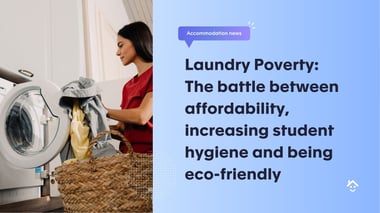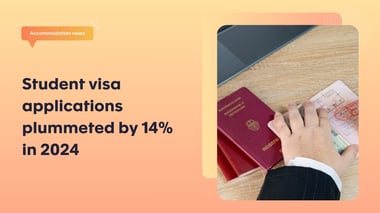University students in the UK have, for the third consecutive year, increased their average spending despite initial beliefs that the COVID-19 pandemic could have reduced it.
The ‘ UCAS Freshers Report 2022 ’ published by UCAS reveals that university students have both increased their fresher’s week spending and their average weekly spend during other times in the year.
Since 2019, students have spent, 14.4% more during Fresher’s week and 9.8% more on an average week. The average weekly spend has climbed to £243 and a whopping £421 during Fresher’s week. It is also important to note that average inflation has also increased by 1.611% in the two years since. Despite this consistent rise in spending from students, how they are spending their money and what on, has seen a shift.
Unlike previous cohorts before them, 2022 students display a solid set of values driving their shopping decisions
Trends emphasized in the report show Gen Z shoppers are increasingly conscious of where they are shopping and the impact their consumption has on the planet. Many students told UCAS that small and independent brands were their favourite way to go when spending their cash. Big brands and designer labels are no longer a huge concern of students, instead, they desire quality items, with their cost relevant to value. Students are also demanding brands with strong morals and brand transparency. Brands such as PrettyLittleThing and Shein, shown to have poor working conditions for staff were the most likely to be abandoned by students. In contrast, brands that promote gender and racial equality are increasingly popular with ethnically-driven students. Since the events of BLM and the gender disparity highlighted by COVID-19, both female and Black-owned businesses have been supported by students who aim to use their purchasing power to reverse injustices in society. Overconsumption and fast fashion are also on the minds of students’ the UCAS report recognises that you are “more likely to bump into Gen Z in the budget aisle or a charity shop than amongst the designer rails”. Thrifting in vintage or charity shops allows students to express their individuality, limit their spending and protect the planet.
Students are logging off and returning to the Highstreet
In the age of one-click checkouts and door-to-door delivery within a day, students are craving the traditional shopping experience. Despite the growth in the use of services such as Deliveroo, Netflix, and Amazon Prime students want to engage with brands through real-life interactions. This also stretches to university study whereby students are increasingly calling for a complete return to in-person teaching. Now we have emerged from the restrictions of the COVID-19 pandemic, students are increasingly spending their money on the high street. For example, 91% of students are buying their groceries in-store, compared to only 83% in 2021. Crucially, for brands and businesses wanting to connect with students, rethinking their digital experience versus in-person experiences may be warranted.
‘The TikTok Revolution’
It would however be naïve to suggest that students are logging off completely from the digital world. One trend which has not ceased since the pandemic has been the unprecedented rise of TikTok, the video-sharing social media platform, as a student go-to for endless scrolling. Its usage, particularly among students, has increased 10x that of any social media rivals, such as Instagram and Facebook, which provides an interesting opportunity for advertisers. For brands wanting to connect with undergraduates, TikTok’s short and snappy video style promotes high engagement rates and an opportunity for both businesses and their products to go viral to students. You can even follow us on there- @accommodationforstudents!
The pandemic has slowed the pace of life and students are embracing spending on health habits and their home environments.
According to the study, the fastest-rising brand was Dunelm, the home furnishings powerhouse. This indicates an increased willingness invest in kitchen and home furnishings and supplies, from students. Undoubtedly this trend has been spurred on by the COVID-19 pandemic and the accompanying lockdowns which vastly slowed down our social lives and confined us to our homes. A recent Study Living Survey has similarly highlighted that in 2022 students are spending an average of 13 hours in their student accommodation, there is no wonder students are willing to spend more on making it a more pleasant environment. TikTok trends such as #nesting which has over 2 million views, further show an increased interest in slower, home-based student lives. This information demonstrates that students are progressively more aware of their accommodation environment. Therefore, accommodation providers and landlords may want to further explore the offerings of their properties and the types of spaces that students may want, both in private rented accommodation and purpose-built student accommodation.
What can we learn from this report?
The UCAS report highlights that we cannot escape the legacy of the COVID-19 pandemic, particularly where students are concerned. Their consumption comes along with a greater sense of purpose, and they have sharpened up on what matters most to them. According to UCAS “this year’s freshers look for value over cost, for physical and digital experiences, for brands which mirror their values, and for more homely lifestyles than we once associated with students”. Therefore, brands need to strategies accordingly, to align their values with the UK’s students and respond rapidly to maintain their relevance in the student market.




